This was the second distillery tour we enjoyed on our Kentucky Thoroughbred and Bourbon Land Cruise in May 2018. The tour cost us $40 apiece and, unfortunately, wasn’t worth the price. I expected this would be a deep dive into the technical and production details of Marker’s Mark along the lines of the Woodford Reserve tour. Alas, it was little more than a standard consumer tour that lacked technical details and was more about marketing talking points. The only bonus was two commemorative Maker’s Mark wax dipped rock glasses. Otherwise, it was a basic consumer tour.
Maker’s Mark Ingredients
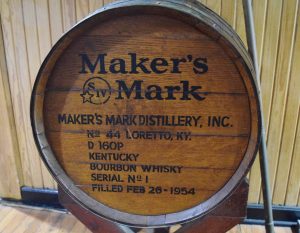
Maker’s Mark uses the same four basic ingredients as every other distiller, namely water, grain, yeast, and the barrels. However, unlike most other bourbons, Maker’s Mark uses wheat as their flavoring grain instead of rye. The mash bill for all Maker’s Mark bourbons is 70% corn, 16% soft red winter wheat from Peterson Farms in Kentucky, and 14% malted barley from Wisconsin. Using wheat results in a sweeter and milder final product, which many people find appealing. My father introduced me to this bourbon and it was the first bourbon I tried drinking without any ice, mixer, or water. It was immensely smooth and easy to drink and quickly became my favorite bourbon. However, over time, my preferences have evolved to more flavorful and robust choices such as Henry McKenna Single Barrel Bottled in Bond. Maker’s Mark propagates its own yeast using a strain our guide told us dated back to 1844. Once again, consistency is the driving force behind the use of this in house propagated yeast. The water source for Maker’s Mark is a nearby 10 acre lake. The water is filtered for mashing and demineralized for adjusting the whisky’s proof for barreling and bottling. Like most Kentucky distilleries, Marker’s Mark purchases its barrels from the Independent Stave Company. The white oak barrels are not toasted and are charred for about 40 seconds. This results in a char of between # 2 and # 3.
The Whiskey Making Process
The process begins with grinding then cooking the grains. All grains are ground on site to the Master Distiller’s specifications using a roll mill instead of a hammer mill. Our guide explained that the roll mill produces a more consistent ground product than the hammer will, which helps produce a more consistent final product. Product consistency is one of the hallmarks of that Maker’s Mark says sets it apart from other bourbons. Once the mash is cooked it is pumped to one of the distillery’s many fermentation tanks. Although Marker’s Mark does use 8 old fashioned cypress wood tanks, most of the mash ends up in one of its 62 modern stainless steel tanks. Like most bourbon distillers, Maker’s Mark uses the sour mash technique. So, as the cooked mash is added to the fermenting tank, some of the back-set, or sour mash, from an earlier distilling run is added. Like so many parts of the Marker’s Mark process, using the sour mash technique leads to product consistency. After fermenting for three days, the resulting distiller’s beer is pumped into one of three identical Vendome column stills.
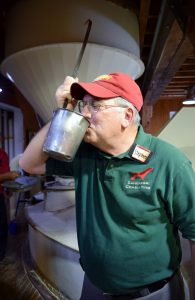
Each of these 38 foot stills contain 17 plates and produce low wine whisky at about 120 proof. The low wines from each column still are pumped to their matching Vendome pot still, also known as a doubler. The finished new make or white dog from the pot stills is about 130 proof. Generally speaking, the higher the proof the less the flavor. Distilling to 130 proof means they are keeping more of the flavors they worked so hard to create during fermentation than if they distilled up to the legal limit for bourbon of 160 proof. As the new make comes off the pot still a bit of demineralized water is added to bring the proof down to 110. This is a lower proof than many of its competitors, and means that the whisky is extracting fewer tannins from the barrel during aging. Fewer tannins means less wood flavors, and leads to the smoother, easier drinking final product for which Maker’s Mark is known. The barrels of new make are stored in the top of one of the distillery’s 7 story rickhouses where they stay for about 3 years. The distillery then rotates the barrels to the middle of bottom of the rickhouse to finish aging. Most barrels are removed from the rickhouse for bottling after aging somewhere between 5 ½ years and 6 ¾ years. Most distilleries do not rotate their barrels, preferring instead to mix barrels from various parts of different rickhouses to get to their desired flavor profile. Marker’s Mark takes this labor intensive and therefore costly approach in order to achieve that prized consistent color, taste, and aroma profile. Our last stop on the tour was the bottling line where we watched the bottles being hand dipped into Marker’s Mark signature wax.
The Tasting
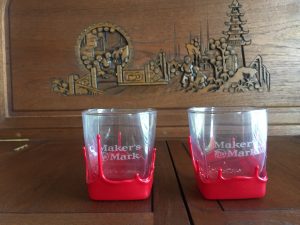
No distillery tour is complete without a tasting. Our tasting consisted of six different samples; standard Maker’s Mark, their premium Marker’s 46, immature or green Maker’s Mark, over mature or spoiled Marker’s Mark, fresh new make, and their Mint Julip specialty drink. I was underwhelmed with both Marker’s Mark products. There is nothing wrong with them, I just have grown to enjoy bourbons with stronger taste and aroma profiles. I didn’t enjoy the immature or over mature samples and wondered why we were even presented with them. Perhaps they just wanted to get rid of some mistakes. The new make was interesting since it will one day grow up into full mature Marker’s Mark. Like it’s older and ready to drink siblings, it was smooth, but without much flavor. I was also underwhelmed by the Mint Julip, preferring to ask a friendly bartender to make one from scratch.
Overall, this was a positive tour experience and I learned quite a bit about Marker’s Mark. However, unless you really want those wax dipped glasses, I recommend the standard tour instead of the Behind the Mark tour.
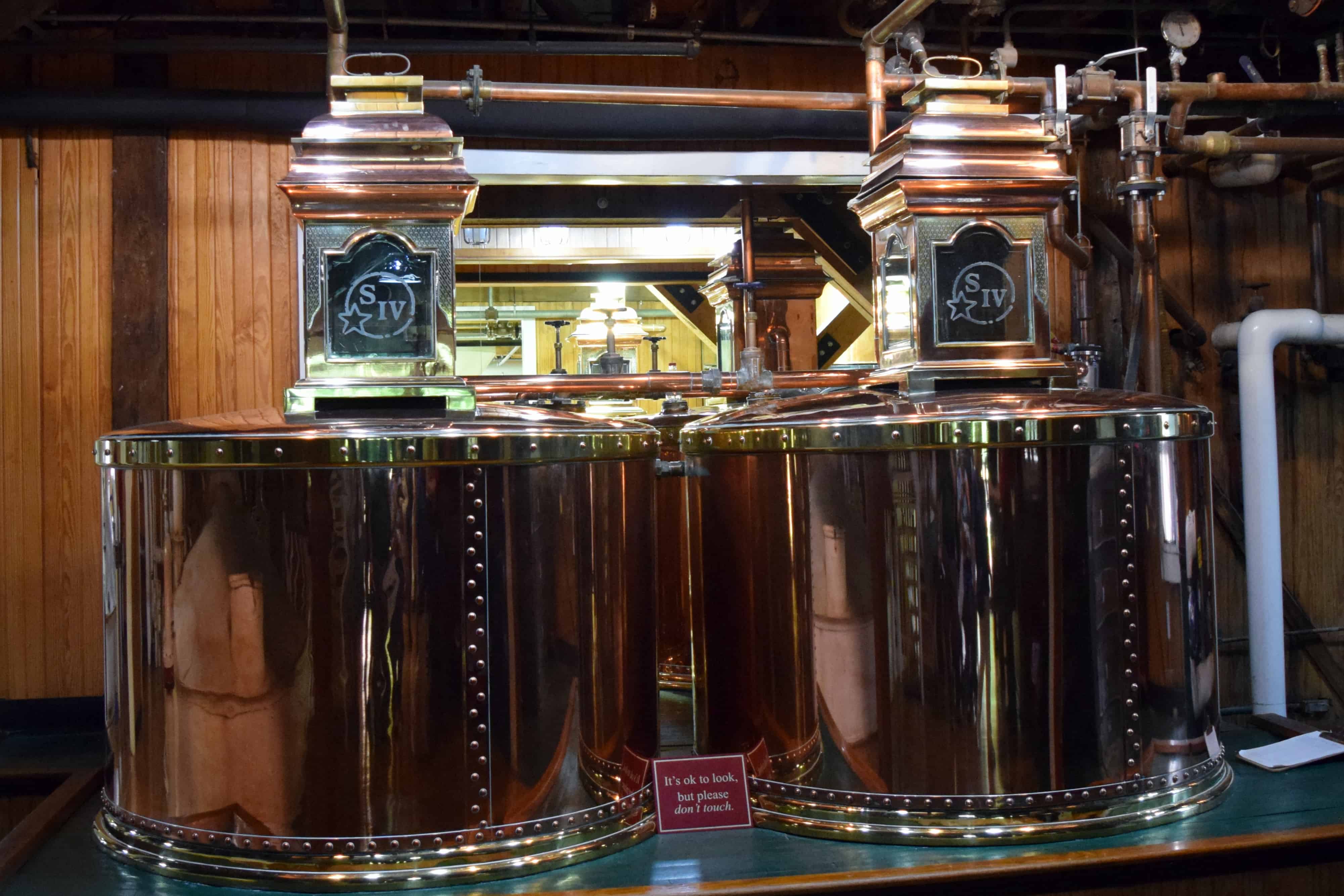
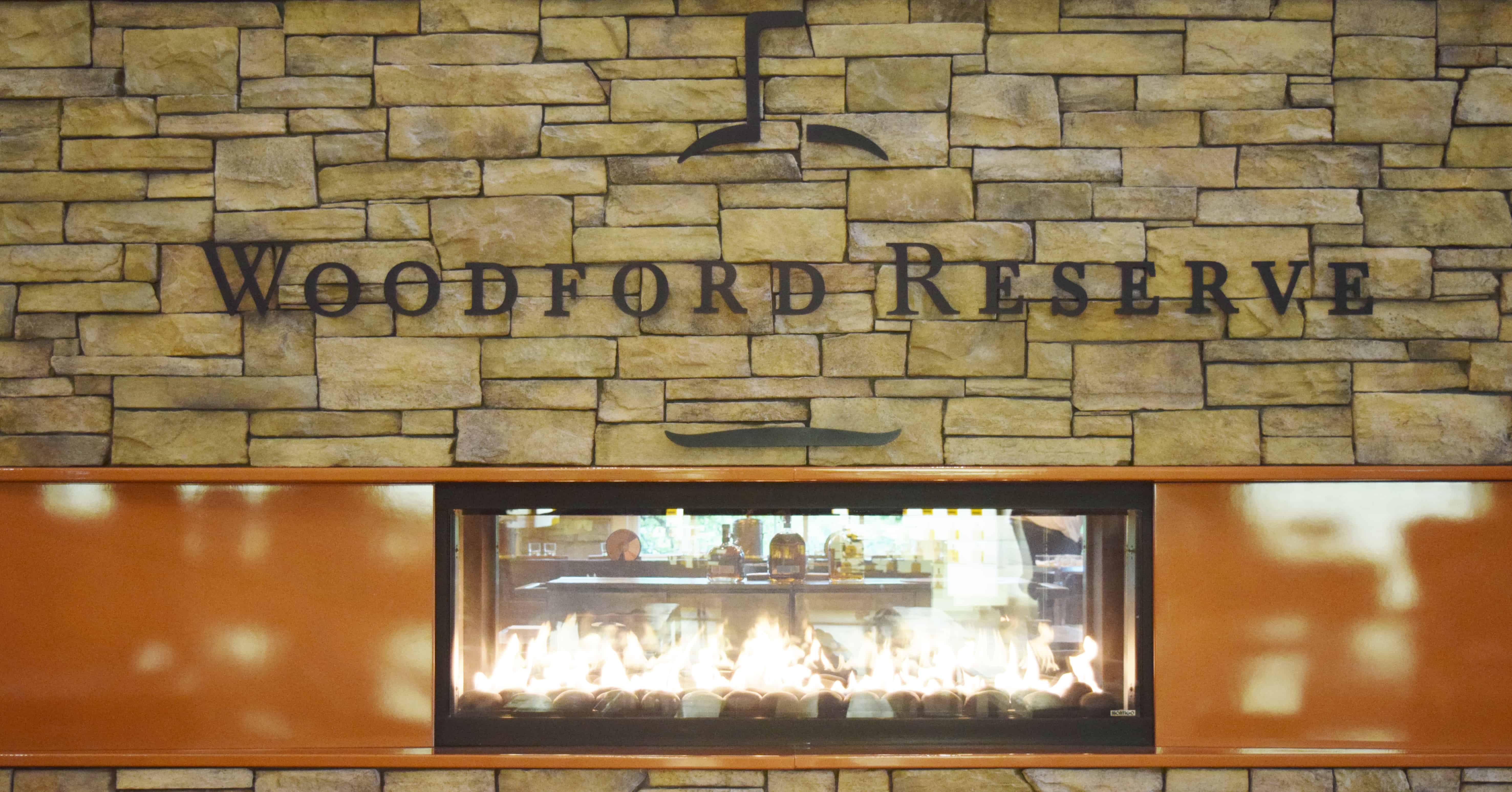

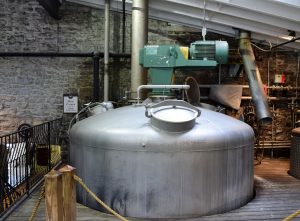

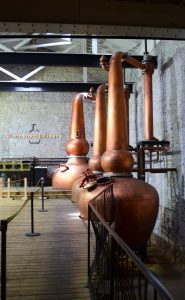 The mash is triple distilled using the three gorgeous copper pot stills. The first, called the beer still, produces a distillate at about 30 proof. As the alcohol vapor condenses it moves into a holding tank. Once a batch is ready in the holding tank, the distillate is pumped into the high wine still which raises the distillate up to about 100 proof. Some cuts are made as the distillate comes off the high wine still, but most of it is passed along to spirits still. The spirits still produces distillate at about 158 proof, which is quite high for bourbon. Most other distillers go no higher than 140 proof. Woodford Reserve cuts out most heads and cuts deeply into the tails, focusing on the hearts to give the final product its strong fruit and floral notes. The heads and tails are recycled into the next batch run to ensure the distillery extracts as much usable alcohol from each fermented batch of mash.
The mash is triple distilled using the three gorgeous copper pot stills. The first, called the beer still, produces a distillate at about 30 proof. As the alcohol vapor condenses it moves into a holding tank. Once a batch is ready in the holding tank, the distillate is pumped into the high wine still which raises the distillate up to about 100 proof. Some cuts are made as the distillate comes off the high wine still, but most of it is passed along to spirits still. The spirits still produces distillate at about 158 proof, which is quite high for bourbon. Most other distillers go no higher than 140 proof. Woodford Reserve cuts out most heads and cuts deeply into the tails, focusing on the hearts to give the final product its strong fruit and floral notes. The heads and tails are recycled into the next batch run to ensure the distillery extracts as much usable alcohol from each fermented batch of mash.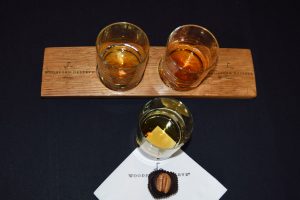 After the Corn to Cork tour was complete we returned to the visitor center to taste three Woodford Reserve products;
After the Corn to Cork tour was complete we returned to the visitor center to taste three Woodford Reserve products;